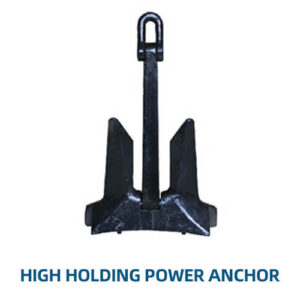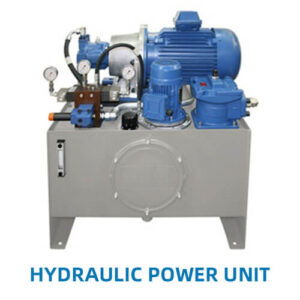Key Features of Working Life Jackets:
- Robust Construction:
- Durable Materials: Working life jackets are typically made from tough, abrasion-resistant materials that can withstand harsh working conditions, such as heavy-duty nylon or polyester. The outer shell is designed to resist tears, punctures, and the effects of exposure to saltwater, oil, and other industrial substances.
- High-Density Foam: The foam used in working life jackets is usually high-density, providing reliable buoyancy to keep the wearer afloat even in challenging conditions. The foam is often encased in compartments to prevent shifting and maintain consistent buoyancy.
- Design for Mobility:
- Ergonomic Fit: These life jackets are designed to allow a full range of motion, ensuring that workers can perform their tasks without feeling restricted. The ergonomic design includes articulated panels and adjustable straps to provide a secure yet comfortable fit.
- Low-Profile Design: Many working life jackets feature a low-profile design to minimize bulk, making it easier for the wearer to move, bend, and lift objects.
- Safety Features:
- High Buoyancy: Working life jackets typically provide higher buoyancy than recreational PFDs, often classified as Type I or Type III PFDs. This ensures that the jacket can keep the wearer’s head above water even in rough seas or if the wearer is unconscious.
- Visibility: High-visibility colors such as orange, yellow, or red are commonly used to make the wearer easily visible to others, especially in low-light conditions or in the event of an emergency. Reflective strips or patches are often added to enhance visibility further.
- Whistle and Signal Light: Many working life jackets come equipped with a whistle attached to the jacket for signaling purposes. Some models also include a pocket for a signal light or are equipped with a water-activated strobe light to increase visibility in the dark.
- Functional Features:
- Tool Pockets and Attachment Points: Working life jackets often include multiple pockets and loops designed to hold essential tools and equipment, such as radios, knives, or other small tools. These pockets are usually water-resistant and strategically placed for easy access.
- D-Rings and Harnesses: Many models feature integrated D-rings or attachment points for securing tools or for tethering the worker to a lifeline or harness system, which is essential in preventing falls or for rescue operations.
- Integrated Safety Harness: Some working life jackets include a built-in safety harness, which allows the wearer to be securely attached to a safety line. This feature is particularly important for workers who are at risk of falling into the water from a height, such as those working on decks or in shipyards.
- Comfort and Adjustability:
- Adjustable Straps: Working life jackets are equipped with adjustable shoulder, chest, and waist straps to ensure a snug and secure fit. This adjustability is crucial for comfort, especially during long shifts.
- Breathable Fabrics: To enhance comfort during extended wear, some models incorporate breathable mesh panels or moisture-wicking materials that help keep the wearer cool and dry.
- Crotch Straps: Many working life jackets include crotch straps to prevent the jacket from riding up, ensuring that it remains properly positioned on the wearer even in turbulent water conditions.
- Applications:
- Commercial Fishing: Working life jackets are essential for fishermen who need a balance of safety, durability, and freedom of movement while handling nets, lines, and equipment on deck.
- Marine Construction: Workers involved in construction projects on or near the water require life jackets that can withstand the rigors of the job site while keeping them safe in case of a fall into the water.
- Dock Work and Shipyards: Dockworkers and shipyard employees benefit from life jackets that provide buoyancy while allowing them to carry tools and perform physically demanding tasks.
- Oil Rigs and Offshore Platforms: On offshore platforms, life jackets with integrated safety harnesses and high-visibility features are critical for ensuring worker safety in hazardous conditions.
Advantages of Working Life Jackets:
- Enhanced Safety: Designed to provide higher levels of buoyancy and visibility, ensuring that workers are protected even in challenging conditions.
- Durability: Built to withstand the tough conditions of industrial and maritime work environments, offering long-lasting protection.
- Functionality: Includes features like tool pockets, D-rings, and harnesses that are specifically tailored to the needs of workers, enhancing both safety and productivity.
- Comfort: Ergonomic designs and adjustable features ensure that workers can wear the life jacket comfortably for extended periods without hindering their ability to perform tasks.
Considerations When Choosing a Working Life Jacket:
- Job Requirements: Consider the specific tasks and conditions in which the life jacket will be used. For example, workers who are frequently exposed to oil or chemicals should choose a jacket with materials resistant to these substances.
- Certifications and Standards: Ensure that the life jacket meets relevant safety standards, such as those set by the U.S. Coast Guard (USCG), the International Maritime Organization (IMO), or other regulatory bodies.
- Size and Fit: Proper fit is essential for safety and comfort. Choose a life jacket that can be adjusted to fit securely over work clothing and gear.
A Working Life Jacket is an essential piece of safety equipment for anyone working in or near water, particularly in commercial, industrial, and maritime settings. These life jackets are designed to offer superior protection, durability, and functionality, ensuring that workers remain safe while performing their duties. With features tailored to the demands of professional use, such as tool storage, high visibility, and integrated harness systems, working life jackets provide peace of mind for both workers and employers in hazardous water-related environments.






